Slideshow: Famous Adoptees or Adopters
by Beth Rowen
For many people today, adoption is a way to create a family. For others, it's a way to expand an existing family. Indeed, one can't pass through the checkout at a grocery store without seeing pictures of Angelina Jolie and Brad Pitt's growing brood plastered on the cover of tabloids. But millions of people have experienced the joys of adoption long before it became a media event. Follow this slideshow to learn about other historical figures who are either adoptees or adoptive parents.
- Louisa May Alcott, American author (1832–1888)
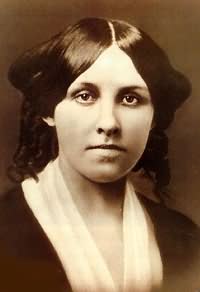
- In 1879, Alcott took in her niece and namesake, Louisa May Nieriker or "Lulu," after her sister May died. Lulu was 2 years old at the time.
- Alcott first achieved wide fame and wealth with Little Women (1868), one of the most popular children's books ever written. The novel, which recounts the adolescent adventures of the four March sisters, is largely autobiographical, the author herself being represented by the spirited Jo March. Good Wives (1869), Little Men (1871), and Jo's Boys (1886) are sequels. Alcott wrote her last story, Lu Sing (1888), to gently encourage Lulu to improve her behavior and act more like a "proper little Alcott girl.". Excerpted from Columbia Encyclopedia.
- Fun Fact: Alcott's first book, Flower Fables (1854), was a collection of tales originally created to amuse Ralph Waldo Emerson's daughter, Ellen.
- Photo source: Today in Literature
- Josephine Baker, African-American dancer and singer (1906–1975)
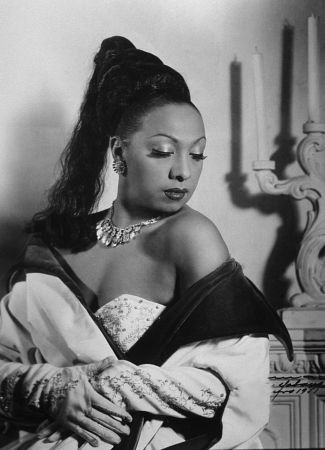
- Although Baker gained fame as a performer, she devoted a significant part of her life to the civil-rights movement and fighting racism. In fact, she adopted 12 multiethnic orphans. She referred to her large family as the "Rainbow Tribe."
- Born in St. Louis, Josephine Baker was a star in Paris for most of her adult life. She left her home in Missouri and began performing in her early teens. She appeared in the chorus lines of all-black revues on New York vaudeville stages, then traveled to Paris in 1925 as part of La Revue Negre. Her lithe body and frank sensuality, combined with her jovial clowning on stage, caused a sensation. She was so successful in Paris that she stayed and opened her own nightclub there, Chez Josephine. Source: Who2
- Fun Fact: Baker bought a castle in the Bordeaux region of France where she lived with her children while they grew up.
- Photo source: Rudolf Suroch
- George Washington Carver, American agricultural chemist (1864-1943)
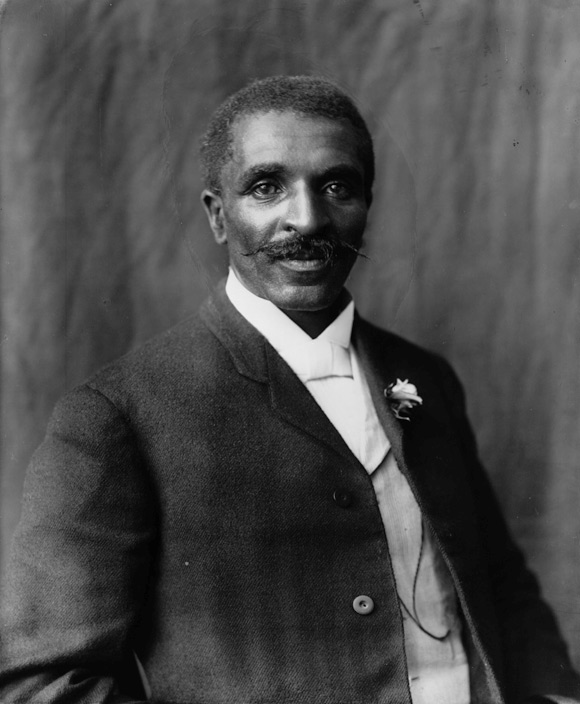
- G.W. Carver was born in 1864. He and his family were enslaved to owner Moses Carver. Soon after his birth, however, George, his mother, and sister were kidnapped from the Carver Plantation by slave raiders who resold them. Moses Carver searched for the family, but was only able to recover George, whom he raised as a son and provided for his education.
- Years later, George earned a B.S. and M.A. from Iowa State College before joining the Tuskegee Institute in 1897 as director of the Department of Agricultural Research. Carver dedicated himself to helping better the position of African Americans in the South, and to improving that region's agricultural economy by teaching about soil improvement and diversification of crops. His accomplishments included discovering hundreds of new uses for crops, such as the peanut, devising new products from cotton waste, and inventing a way to extract pigments from the local clay. Carver contributed his life savings to a foundation for research at Tuskegee.
- Fun Fact: In 1953, Carver's birthplace was made a national monument. It was the first U.S. national monument dedicated to an African American.
- Photo source: Library of Congress
- Joan Didion, American writer (b. 1934)
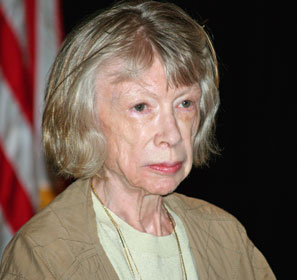
- Didion and her husband, John Gregory Dunne, also a writer, adopted their daughter, Quintana Roo Dunne, at birth in 1966. Quintana became a photographer and editor. A series of prolonged illnesses ended her life in 2005 at age 39. She died one month before the release of Didion's memoir The Year of Magical Thinking (2005), an account of the grief-filled year that followed the death of her husband in 2003.
- Didion's works often explore the despair of contemporary American life, a condition resulting from the disintegration of morality and values. She is known for a cool and almost brittle style that emphasizes the concrete. Her novels include Run River (1963), A Book of Common Prayer (1977), Salvador (1983), and The Last Thing He Wanted (1996). Among her books of essays are Slouching toward Bethlehem (1968) and The White Album (1979), groundbreaking analyses of then-contemporary life and culture that combine the personal with the topical. Excerpted from Columbia Encyclopedia.
- Fun Fact: Didion and her husband collaborated on several screenplays, including A Star Is Born and True Confessions.
- Photo source: David Shankbone
- Walt Disney, producer of animated films (1901–1966)

- Disney and his wife had one biological daughter, Diane, and an adopted daughter, Sharon.
- In 1928, Disney created the character Mickey Mouse in the silent film Plane Crazy. Disney produced the first feature-length cartoon, Snow White and the Seven Dwarfs (1938), which took three years to complete. Additional features included Pinocchio (1939), Fantasia (1940), Dumbo (1941), and Bambi (1942). During World War II, Disney's studio produced cartoons for the armed services as training tools and morale builders. In Song of the South (1946), he merged live actors and animated figures.
- Beginning with Treasure Island in 1951, Disney added live-action movies to his output. His studio also produced musical fantasies (Mary Poppins, 1964), and television programs, beginning in the early 1950s with the weekly Disneyland and its famous Mouseketeers. Disney and his productions received numerous Academy and other awards during his lifetime. Excerpted from Columbia Encyclopedia.
- Fun Fact: Sharon Disney followed in her father's footsteps by becoming the director of the Walt Disney Company from 1984 to 1993.
- Photo source: NASA
- Gerald Ford, 38th president of the United States (1913–2006)
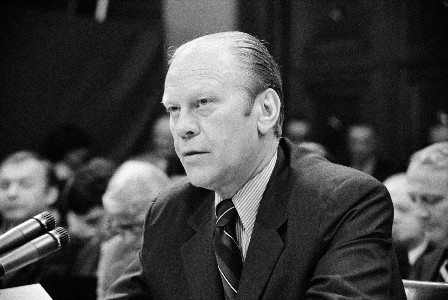
- Ford's parents divorced when he was an infant, and his mother later married paint salesman Gerald R. Ford. According to Ford's presidential library, "The Fords began calling her son Gerald R. Ford, Jr., although his name was not legally changed until December 3, 1935."
- Ford became president of the United States after the Watergate scandal forced Richard Nixon from office in 1974. Though he served as president for only 29 months, Ford is now widely credited with restoring public faith in the office of the president after the scandals of the Nixon years. Ford served in the U.S. Navy during World War II. He was elected to Congress in 1948 as a U.S. Representative from Michigan. Ford was appointed vice president in 1973 when Nixon's previous vice president, Spiro Agnew, resigned after pleading no contest to a tax evasion charge. Nixon himself resigned on 9 August 1974, and Ford took office the same day, telling Americans that "our long national nightmare is over." One month later, Ford granted Nixon a full pardon for any crimes. Ford ran for re-election in 1976, but lost to Jimmy Carter. Excerpted from Who2.
- Fun Fact: At 93 years, Ford was the longest-lived president in U.S. history; the month before his death, he passed the previous record holder, Ronald Reagan.
- Photo source: Library of Congress
- John Hancock, political leader in the American Revolution (1737–1793)
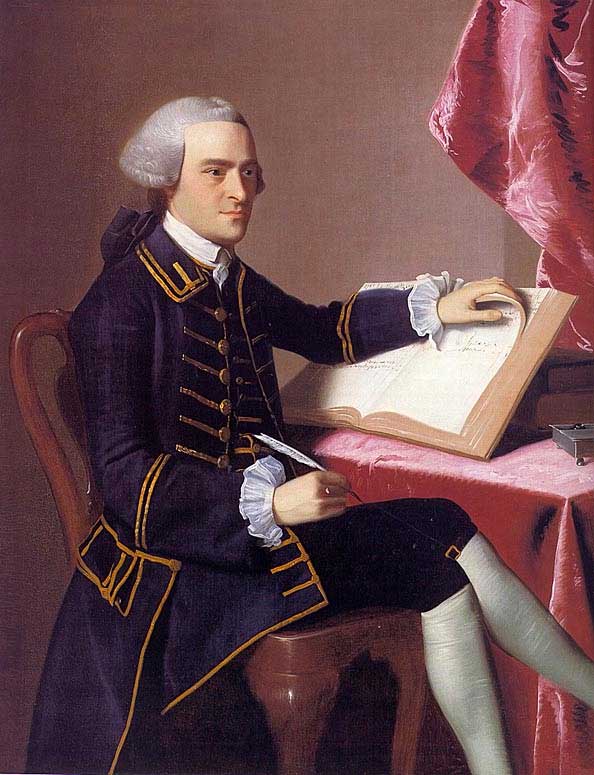
- John Hancock was born in Braintree, Mass., to Rev. John Hancock and Mary Hawke. After his father's death in 1742, John was adopted by his paternal uncle, Thomas Hancock, a successful businessman.
- Hancock inherited Boston's leading mercantile firm, and naturally opposed the Stamp Act (1765) and other British trade restrictions. In 1768, his ship Liberty was seized as a smuggler and confiscated by the crown. A riot ensued, and later the ship was burned. Hancock was hailed as a martyr and elected (1766) to the legislature, where he joined Samuel Adams in advocating resistance to England. In 1775, Gen. Thomas Gage issued a warrant for their arrest, but they escaped. Hancock was a member (1775-80, 1785-86) and president (1775-77, 1785-86) of the Continental Congress. He was governor of Massachusetts (1780-85, 1787-93). Excerpted from Columbia Encyclopedia.
- Fun Fact: His name appears first (and largest) on the Declaration of Independence. The term "John Hancock" is synonymous with signature.
- Photo source: John Singleton Copley
- Jesse Jackson, African-American political leader,
clergyman, and civil-rights activist (b. 1941) 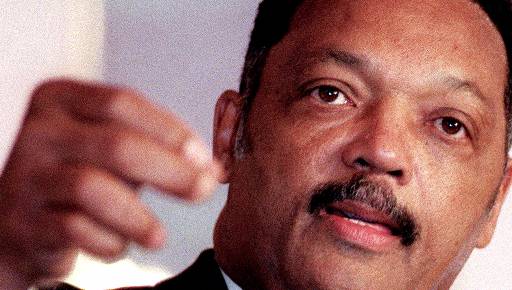
- Jackson was born in 1941 to Helen Burns, a 16-year-old single mother. His biological father, Noah Louis Robinson, a former professional boxer, was married to another woman at the time of Jackson's birth. In 1943, Burns married Charles Henry Jackson, who later adopted Jesse, who took the surname of his adoptive father.
- Jackson was ordained a Baptist minister in 1968. Active in the civil-rights movement, he became a close associate of Martin Luther King, Jr. He served as executive director (1966–71) of Operation Breadbasket, a program of the Southern Christian Leadership Conference (SCLC) that addressed the economic problems of African Americans in northern cities. In 1971, he founded Operation PUSH (People United to Save Humanity), an organization to combat racism. Since 1986 he has been president of the National Rainbow Coalition, an independent political organization aimed at uniting disparate groups—racial minorities, the poor, peace activists, and environmentalists. Excerpted from Columbia Encyclopedia.
- Fun Fact: Jesse Jackson campaigned for the Democratic presidential nomination in 1984 and 1988. He was the first African American to vie seriously for the office.
- Photo source: Library of Congress
- Steve Jobs, co-founder of Apple Computers (b. 1955)

- Jobs was given up for adoption after birth and raised by his adoptive parents, Justin and Clara Jobs, in Silicon Valley, Calif. Jobs was a college dropout when he teamed up with Steve Wozniak in 1976 to sell personal computers assembled in Jobs's garage. That was the beginning of Apple Computers, which revolutionized the computing industry and made Jobs a multimillionaire before he was 30 years old. He was forced out of Apple in 1985, but returned in 1996. Jobs soon became Apple's chief executive officer and sparked a resurgence in the company with products like the iMac computer and the iPod music player. Jobs is also the CEO of Pixar, the animation company responsible for movies like Toy Story and Monsters, Inc. Excerpted from Who2.
- Fun Fact: Steve Jobs's biological sister is the novelist Mona Simpson, author of Anywhere But Here.
- Photo source: Matthew Yohe
- Sen. John McCain, Republican senator from Arizona (b. 1936)
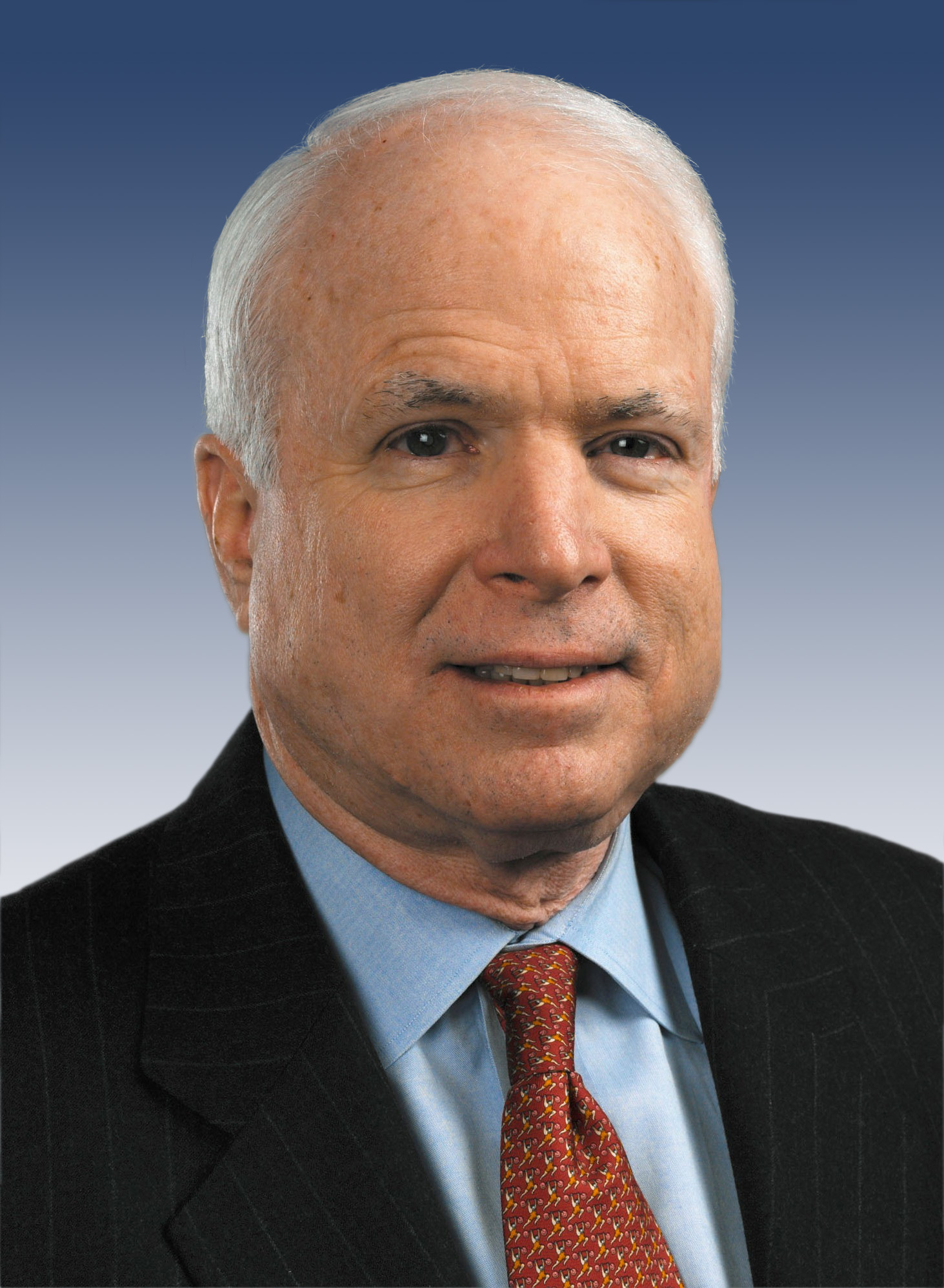
- John McCain has seven children; three of whom were adopted: Doug Shepp and Andy Shepp (adopted during his marriage to their mother, Carol Shepp) and Bridget McCain, whom he and wife Cindy McCain adopted from Bangladesh in 1993.
- A 1958 graduate of the U.S. Naval Academy, McCain had a 22-year military career as a pilot and officer in the Navy. Five of those years (1967-73) were spent in a Vietnamese prisoner of war camp after he was shot down over Hanoi during the Vietnam War. McCain left the Navy in 1981, was elected to Congress in 1982, and then was elected as U.S. senator from Arizona in 1986. In 2000, he ran for the Republican presidential nomination, but was defeated by George W. Bush. His second run for the Republican nomination in 2008 was a success, but he lost the general election to Sen. Barack Obama. McCain's 1999 book Faith of My Fathers told the story of his family's military history and his own experiences as a POW.
- Fun Fact: McCain's father and grandfather were both four-star admirals in the U.S. Navy.
- Photo source: Library of Congress
- Edgar Allan Poe, American poet, short-story writer (1809–1849)
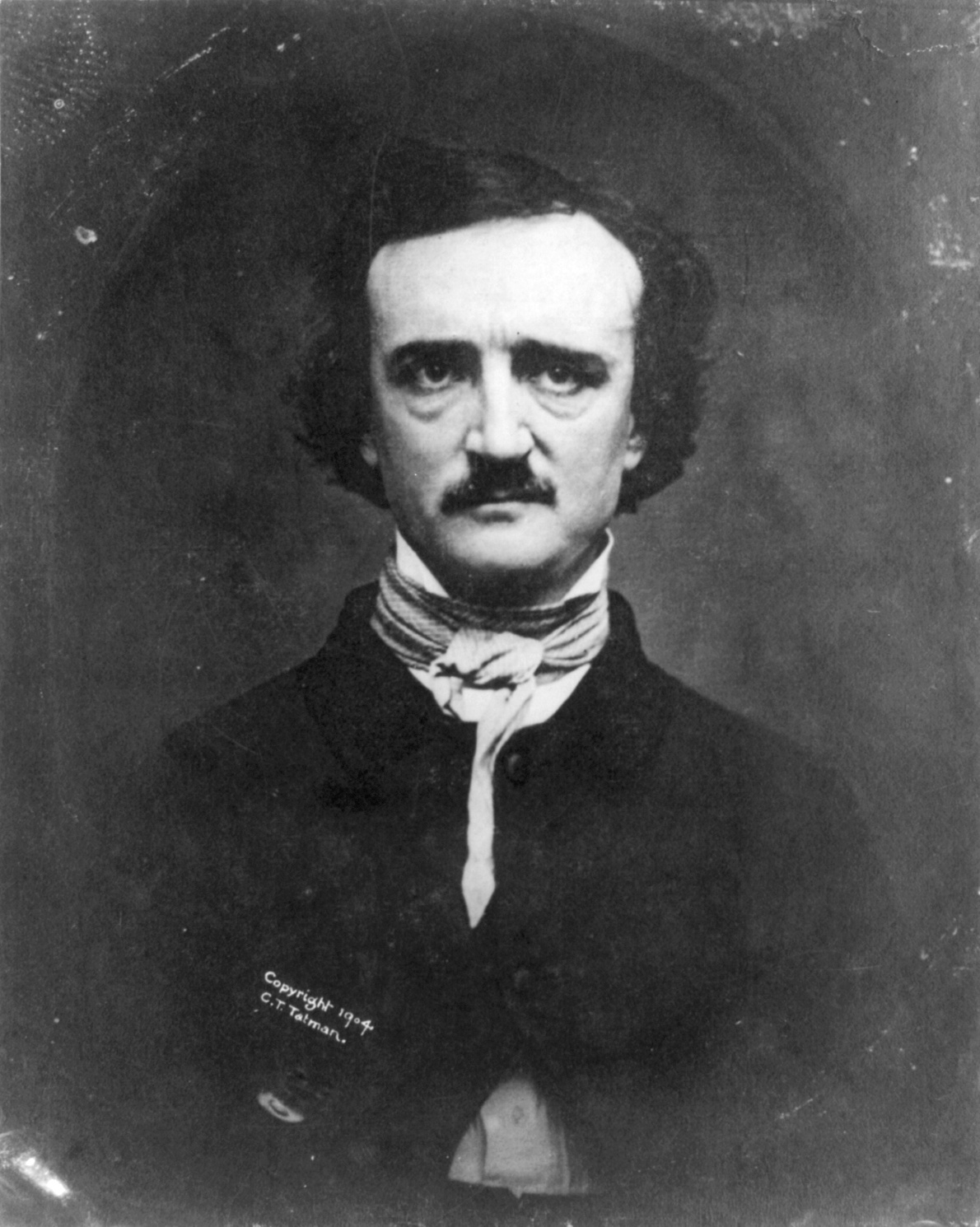
- Poe's parents, who were both actors, died by the time he was 3 years old. He was taken into the home of his godfather, John Allan, a wealthy Richmond merchant.
- Poe is considered one of the most brilliant and original writers in American literature. His skillfully wrought tales and poems passionately convey the mysterious, dreamlike, and often macabre forces that pervaded his sensibility.
- His first book, Tamerlane and Other Poems, was published in 1827. He edited Burton's Gentleman's Magazine (1839–40) and Graham's Magazine (1841–42). His criticism, which appeared in these magazines and in the Messenger, was direct and incisive and made him a respected and feared critic. At that time he also began writing mystery stories. The Raven and Other Poems (1845) won him fame as a poet both at home and abroad. Excerpted from Columbia Encyclopedia.
- Fun Fact: Edgar Allan Poe is widely credited with inventing detective fiction.
- Photo source: Library of Congress
- Nancy Davis Reagan, actress and former First Lady (b. 1921)
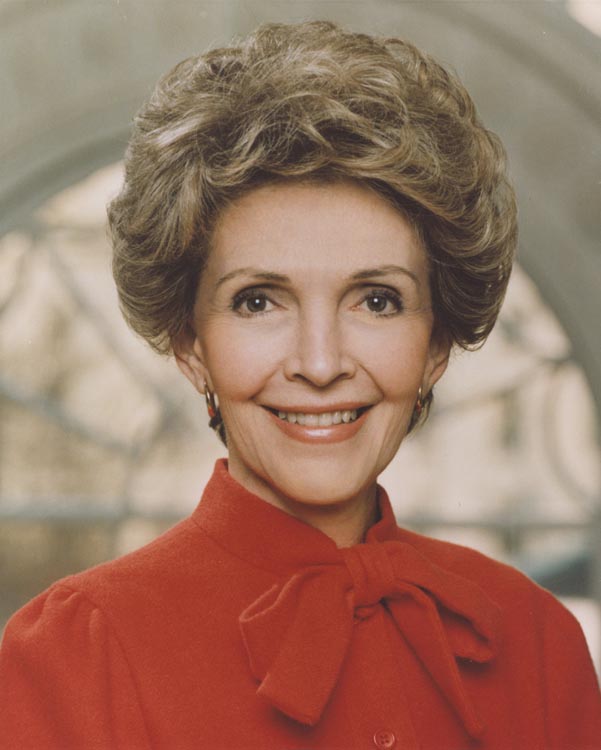
- Reagan was born Anne Frances Robbins to Kenneth Seymour Robbins and Edith Luckett. Her parents divorced soon after Reagan's birth, and in 1929 her mother married Loyal Davis, a neurosurgeon. He formally adopted her in 1935, and her name was legally changed to Nancy Davis. (She had been called Nancy since early childhood.)
- Nancy Reagan was First Lady of the United States during the two presidential terms of her husband, Ronald Reagan. She made a handful of movies in Hollywood before she met Reagan, who had been a popular actor for a decade. In 1958, Reagan gave up her acting career in order to raise a family and to support her husband's political ambitions. In her role as First Lady, Reagan is best remembered for her fight against narcotics abuse, centered on her advice to "Just Say No" to drugs. Excerpted from Who2.
- Fun Fact: In 1957, Nancy and Ronald Reagan appeared together in Hellcats of the Navy, a World War II submarine drama in which they were paired romantically on-screen.
- Photo source: National Archives and Records Administration
- Kurt Vonnegut, American writer (1922–2007)

- Vonnegut had three children from his first marriage, he adopted his sister's three children after she died from cancer, and he and his second wife, Jill Krementz, adopted a girl, Lily, as an infant. Vonnegut's sister, Alice, died of cancer only two days after her husband was killed in a train accident.
- Kurt Vonnegut wrote dozens of satirical novels whose central theme is life's cosmic joke on humanity. Vonnegut was often called a science fiction author, but it's well known that he used the cloak of sci-fi simply as a means to deliver his cranky-but-funny deliberations on the human condition. His best-known books include Cat's Cradle (1963), Welcome to the Monkey House (1968), Slaughterhouse-Five (1969), and Slapstick (1976). Many of his books feature a character named Kilgore Trout, a fictional author who is something of an alter-ego for Vonnegut himself. Excerpted from Who2.
- Fun Fact: "Thank You Kurt Vonnegut for Everything," appears at the end of Michael Moore's 2007 film Sicko.
- Photo source: Case Western Reserve University
| Prev | Next |
- More from Race & Ethnicity
Related Links |
Trending
Here are the facts and trivia that people are buzzing about.







